Many macro shooters have come to know that the scorpion’s exoskeleton glows a bright cyan under Ultra Violet (UV) light. But few know why or how.
Why the need to glow?
After scouring around for answers, the most commonly accepted answer was… that the scorpion’s cuticle or exoskeleton functions as a giant secondary eye, collecting light information and relaying it to the nervous system. It is believed to be used by the scorpions to detect shelter, as being under shelter would block the light signals on it’s body. Douglas Gaffin of the University of Oklahoma “blindfolded” the scorpions and found that they could still detect light. See link here.
There is another theory that the nocturnal scorpions have properties in it’s exoskeleton that repels UV light, protecting it from the sun. Scorpions normally hunt at night and are tuned for the light and temperature conditions. If it requires to move in the day for any reason, this might help to re-radiate solar energy from the sun.
How did it glow?
As for HOW the glow came about, further scouring found that the mature exoskeleton accumulates a chemical called beta-carboline, which glows under UV.
Update 20 Nov 2013: My UV photos were recently published on WIRED, with more details on this phenomenon: The Secret World of Fluorescent Arthropods.
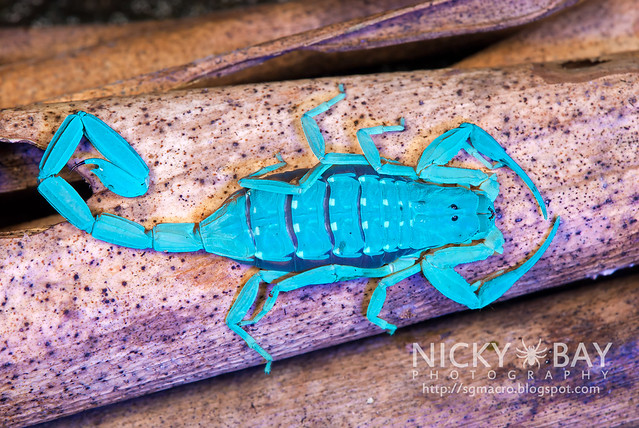 #1 Had everyone practising UV shots with my UV torch, this shot used flash to fill the background. This Lychas scutilus is quite commonly found in Singapore.
#1 Had everyone practising UV shots with my UV torch, this shot used flash to fill the background. This Lychas scutilus is quite commonly found in Singapore. #2 Same composition, but purely lit by UV light
#2 Same composition, but purely lit by UV light #3 A pair of scorpions on the tree bark, again with fill flash
#3 A pair of scorpions on the tree bark, again with fill flash #4 The same pair lighted with only UV light.
#4 The same pair lighted with only UV light.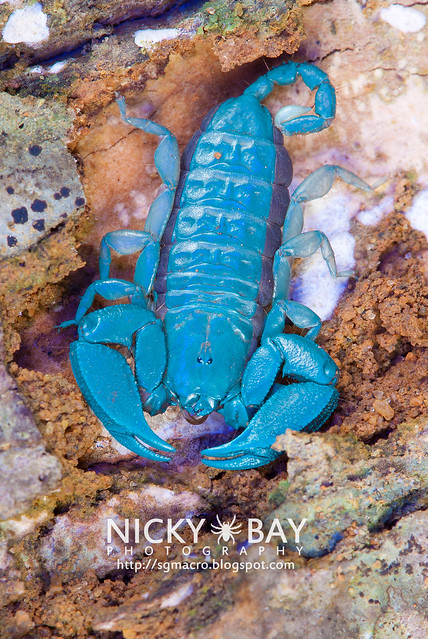 #5 Different scorpions glow as well! Possibly Hemiscorpiidae, Liocheles australasiae.
#5 Different scorpions glow as well! Possibly Hemiscorpiidae, Liocheles australasiae. #6 Even the black forest scorpion glows. Without the UV light, it would appear completely black.
#6 Even the black forest scorpion glows. Without the UV light, it would appear completely black. #7 A mother with babies on her back. As mentioned earlier, the chemical causing the glow accumulates on mature exoskeletons. That’s probably why the babies do not glow.
#7 A mother with babies on her back. As mentioned earlier, the chemical causing the glow accumulates on mature exoskeletons. That’s probably why the babies do not glow.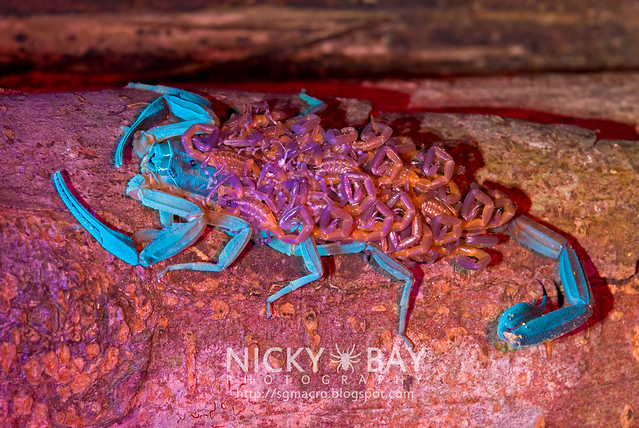 #8 Another old picture of a scorpion with babies. The scene was lighted with a red light, showing again that the babies do not glow under UV light.
#8 Another old picture of a scorpion with babies. The scene was lighted with a red light, showing again that the babies do not glow under UV light.
Some other simple finds at Nangka Trail…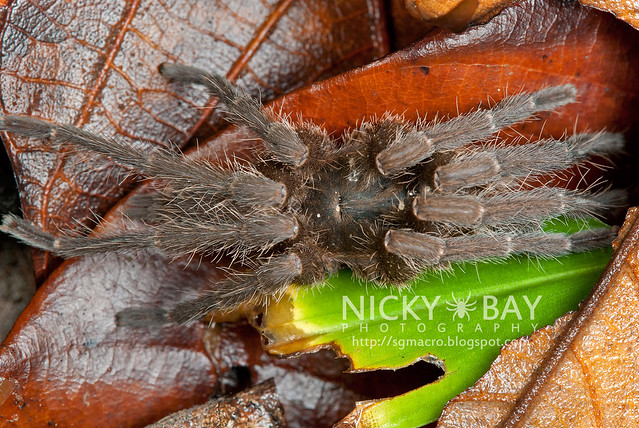 #9 James found this common male Tarantula (Phlogiellus sp.) on the leaf litter.
#9 James found this common male Tarantula (Phlogiellus sp.) on the leaf litter.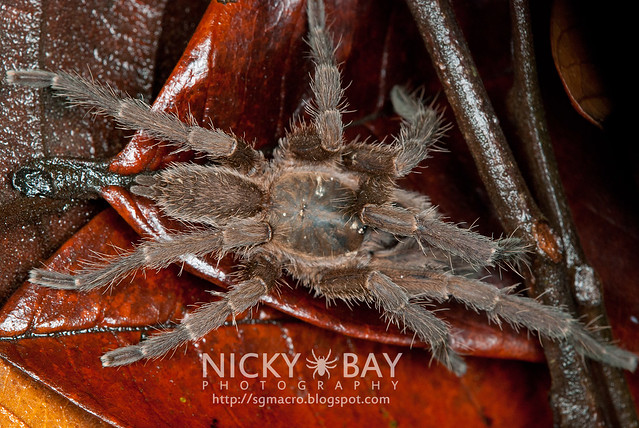 #10 It ran off in hiding after this shot
#10 It ran off in hiding after this shot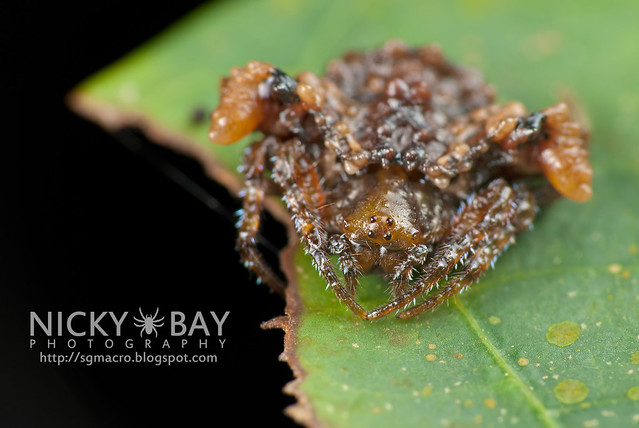 #11 A very small female Bird Dung Spider (Pasilobus sp.)
#11 A very small female Bird Dung Spider (Pasilobus sp.) #12 A beautiful Huntsman Spider (Olios sp.)
#12 A beautiful Huntsman Spider (Olios sp.)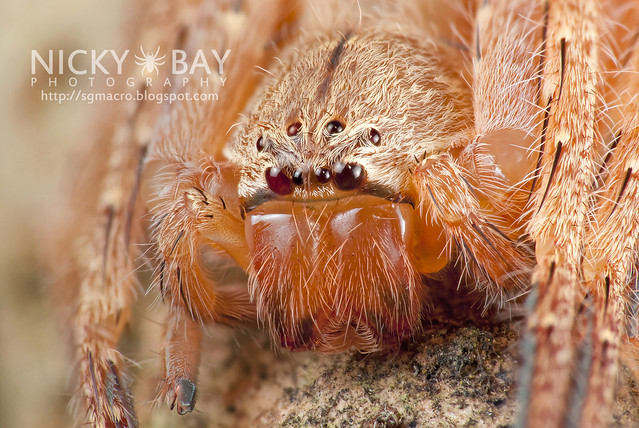 #13 Closer view of the face
#13 Closer view of the face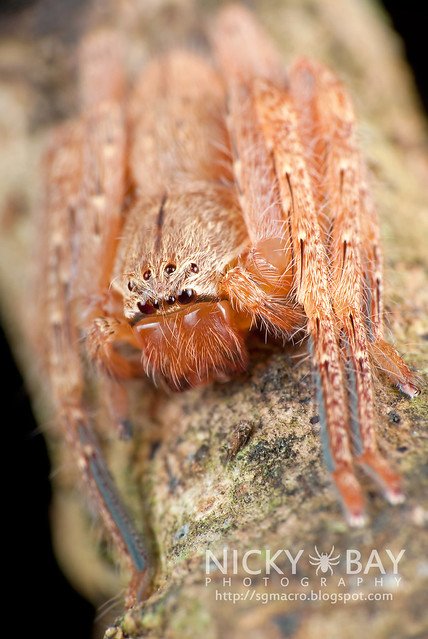 #14 Wider view of the body
#14 Wider view of the body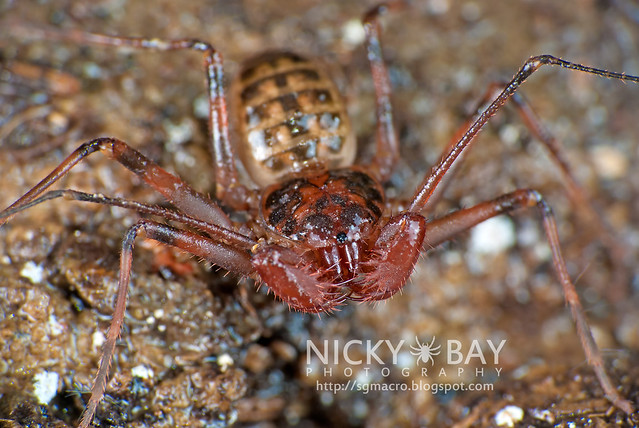 #15 A tiny Amblypygi, resident of Nangka Trail.
#15 A tiny Amblypygi, resident of Nangka Trail. #16 A baby Tarantula (Phlogiellus sp. running around on a rock.
#16 A baby Tarantula (Phlogiellus sp. running around on a rock. 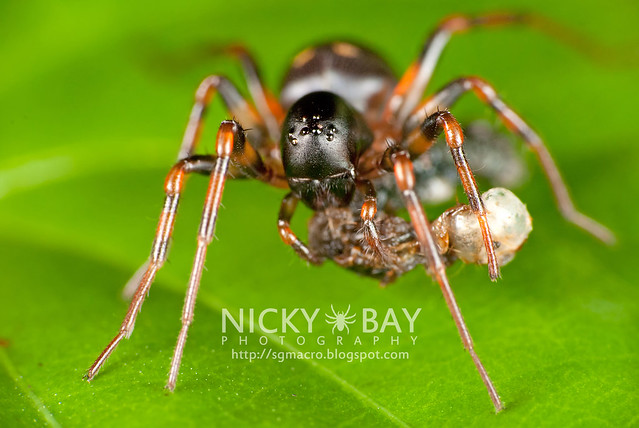 #17 Ground Spider (Mallinella cinctipes) with supper
#17 Ground Spider (Mallinella cinctipes) with supper #18 Appears to be a pisaurid, but check out the eye arrangement (below) and it should be a ctenid, likely to be from the genus Acantheis.
#18 Appears to be a pisaurid, but check out the eye arrangement (below) and it should be a ctenid, likely to be from the genus Acantheis.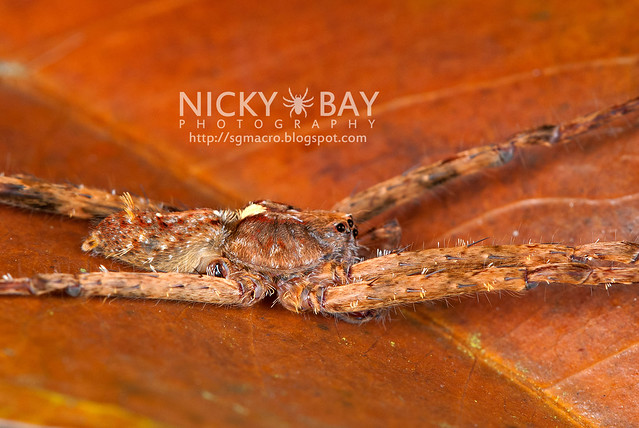 #19 View from a lower angle
#19 View from a lower angle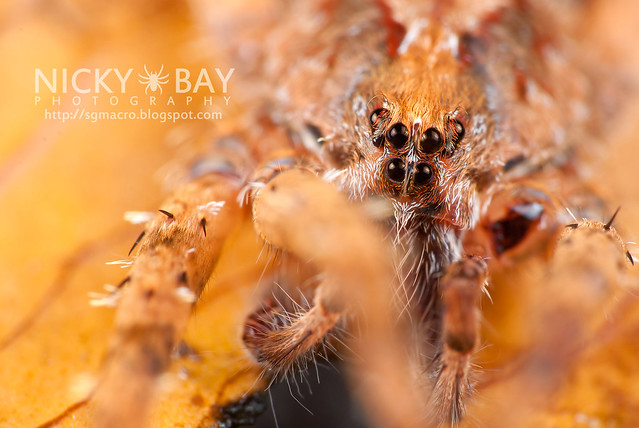 #20 Close up on the face
#20 Close up on the face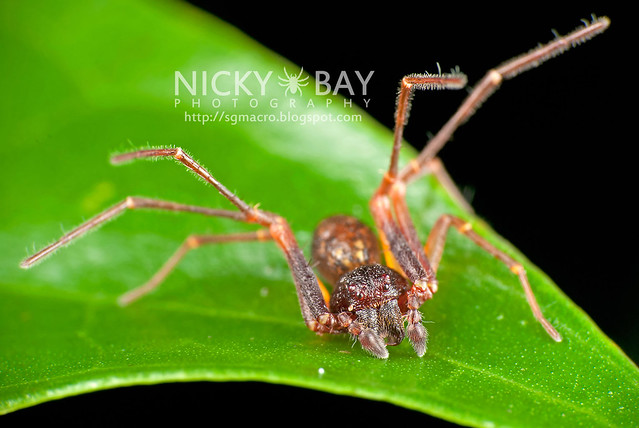 #21 Male Crab Spider (Cebrenninus rugosa) ID kindly provided by David Court.
#21 Male Crab Spider (Cebrenninus rugosa) ID kindly provided by David Court.
James blogged about this trip here.
The complete album can be viewed here.
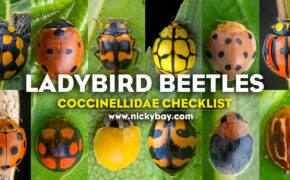
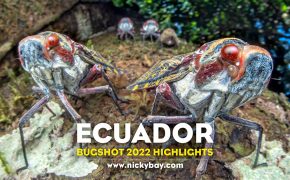
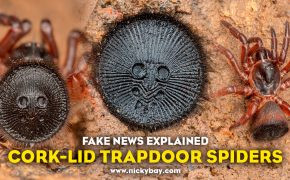
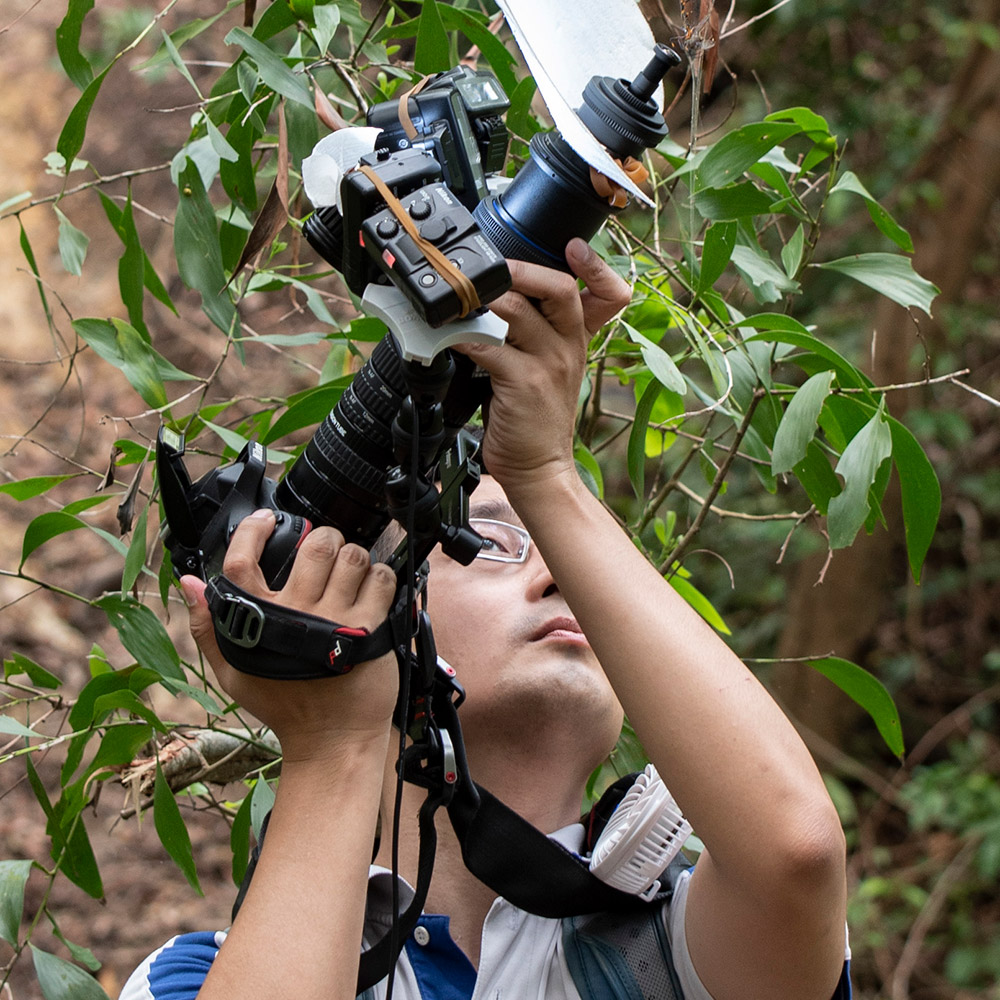










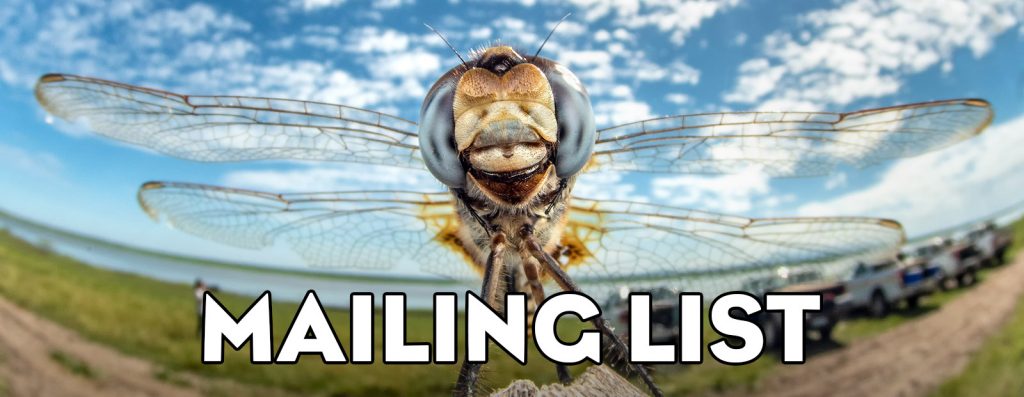
altaher altabet
Your work so amazing my friend, thank you for bring us such beauty… welldone
Anonymous
These images are great! Thank you for sharing. I am a pmp in Arizona and so I am fascinated by scorpions. One question, can you provide me with a reference under the How did it glow? section listing beta-carboline as the chemical that accumulates on the scorpions cuticle.
Nicky Bay
Hi!
You can get a few references in Google by searching for "beta-carboline scorpion"
https://www.google.com.sg/search?q=beta-carboline+scorpion
One of the references:
http://www.sciencedirect.com/science/article/pii/S1074552199800854